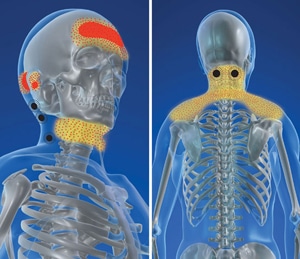Whiplash & Accident Related Injuries
Don’t ignore this condition as the pain often disappears but the dysfunction stays.

Don’t ignore this condition as the pain often disappears but the dysfunction stays.

Muscles are always involved as this is primarily soft tissue injury and often includes damage to ligaments and joints. Left untreated (even if the pain goes away) it can lead to loss of range of motion in the neck, neck stiffness, and arthritis leading to intense arm and hand pain years down the road. Don’t ignore this condition as the pain often disappears but the dysfunction stays.
Self-check: History of neck trauma (even years ago), loss of ranges of motion, pain when looking up and pain radiating down the shoulders or arms are possible signs of a whiplash injury.
Although commonly associated with auto accidents, whiplash can happen with a slip, fall, or any sudden, unexpected force on the neck. Muscles are always involved as this is primarily soft tissue injury and often includes damage to ligaments and joints as well.
History of neck trauma (even years ago), loss of ranges of motion, pain when looking up and pain radiating down the shoulders or arms are possible signs of a whiplash injury.
Restoring joint mobility and reducing muscular tightness or spasm will allow a return to full pain free ranges of motion. Depending on the nature of the accident, specific stretching and rehab exercises will be prescribed to assure long lasting relief.
Left untreated (even if the pain goes away) it can lead to loss of range of motion in the neck, neck stiffness, and arthritis leading to intense arm and hand pain years down the road.
